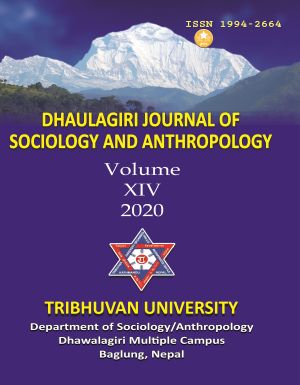Gender Differentials in Climate Change Perception in the Kaligandaki Basin, Nepal
DOI:
https://doi.org/10.3126/dsaj.v14i0.26568Keywords:
climate change perception, gender, Himalaya, Kaligandaki Basin, NepalAbstract
Men and women variably perceive climate change, as the literature suggests that women perceive a higher level of changes compared to men. This study investigated differentials in climate change perception among Nepal's men and women, using a river basin level primary data. Data were collected from 360 household heads of three spatial clusters – Meghauli (153), Lumle (141), and Upper-Mustang (66), located at different ecological zones of the Kaligandaki Basin. Out of the total respondents, 106 were women. Perceptions on 11 weather-related elements were asked to the respondents to level the perceived change in the unipolar Likert Scale. Such information was supplemented through 75 Key Informants (KIs), 24 Focused Group Discussions (FGDs), and Historical Timeline Calendars from nine locations. Findings suggest that differences in climate change perception exist between women and men, and women in particular generally felt a higher level of change. However, the findings are not strongly supported by both statistical tests i.e. test of mean differences (the independent sample t-test) between the responses of men and women, and the test of association (chi-square) between the gender of respondents and the type of responses they have chosen. The findings indicate that both men and women perceive the change if it was easily noticeable. Therefore, a critical understanding of the association of other socio-economic and ecological factors on the construction of perception to climate change would be necessary to form a successful climate change adaptation policy. Furthermore, since the findings are based on an exploratory and cross-sectional study, further investigation with rigorous approaches is required to draw more concrete conclusions.




